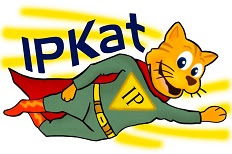Colombia: association is enough
The Colombian Superintendence of industry and Commerce (SIC) granted the registration of the word mark PLANICAN after finding without cause the opposition made by PLITICAN’ s mark’s owner.
The application was made by Chalver Laboratorios de Colombia S.A. on 6th February 2014 in Class 5 i.e. for "syrups for pharmaceutical use; supplements dietary and nutritious; fortified products; nutritional supplements" and other medical products. When the dossier No 14 025216 became published in August 2014, Sanofi, opposed to the registration on the grounds of lack of distinctiveness [absolute grounds of refusal Article 135(b) Andean Community (CAN) Decision 486] and similarity of its registered trade mark PLITICAN (No 92 209061) for identical products (Class 5) [relative grounds of refusal Art 136(a) CAN Decision 486].
The opposition
Who is Sanofi? According to the Colombian newspaper La Republica, Sanofi “is the leading company in the pharmaceutical industry in Europe, the fourth worldwide and number one in the Colombian pharmaceutical market”.
 Sanofi argued that the sign PLANICAN did have visual, orthographic and phonetic similarities with its mark PLITICAN. The two words ended in an identical expression i.e. ‘ican’; both word have the same number of letters; the accent on the last syllable. Moreover, the two signs identified pharmaceutical products. It is then argued that the examiner ought to have made a more “in-depth analysis, because it represented a risk to the consumer.” It then explained that “consumers could be induced to an error concerning the origin of the product, as being aimed at the health care it implied that they shared marketing and distribution channels.”
Sanofi argued that the sign PLANICAN did have visual, orthographic and phonetic similarities with its mark PLITICAN. The two words ended in an identical expression i.e. ‘ican’; both word have the same number of letters; the accent on the last syllable. Moreover, the two signs identified pharmaceutical products. It is then argued that the examiner ought to have made a more “in-depth analysis, because it represented a risk to the consumer.” It then explained that “consumers could be induced to an error concerning the origin of the product, as being aimed at the health care it implied that they shared marketing and distribution channels.”
SIC
While SIC found similarities in the use of the ending words “ican”, it explained that the analysis is focused on the whole sign and that the additional elements given to the sign “generated a different impression on the consumer”. Therefore, the signs should coexist on the market as there was no likelihood of association required by Art 136(a) -which requires confusion OR association. Observe that the EU case law requires confusion rather than association. Moreover, it is established that likelihood of confusion incorporates the likelihood of association but association alone is not enough (Wagamama).
The application was made by Chalver Laboratorios de Colombia S.A. on 6th February 2014 in Class 5 i.e. for "syrups for pharmaceutical use; supplements dietary and nutritious; fortified products; nutritional supplements" and other medical products. When the dossier No 14 025216 became published in August 2014, Sanofi, opposed to the registration on the grounds of lack of distinctiveness [absolute grounds of refusal Article 135(b) Andean Community (CAN) Decision 486] and similarity of its registered trade mark PLITICAN (No 92 209061) for identical products (Class 5) [relative grounds of refusal Art 136(a) CAN Decision 486].
The opposition
Who is Sanofi? According to the Colombian newspaper La Republica, Sanofi “is the leading company in the pharmaceutical industry in Europe, the fourth worldwide and number one in the Colombian pharmaceutical market”.
SIC
While SIC found similarities in the use of the ending words “ican”, it explained that the analysis is focused on the whole sign and that the additional elements given to the sign “generated a different impression on the consumer”. Therefore, the signs should coexist on the market as there was no likelihood of association required by Art 136(a) -which requires confusion OR association. Observe that the EU case law requires confusion rather than association. Moreover, it is established that likelihood of confusion incorporates the likelihood of association but association alone is not enough (Wagamama).




.jpg)

















